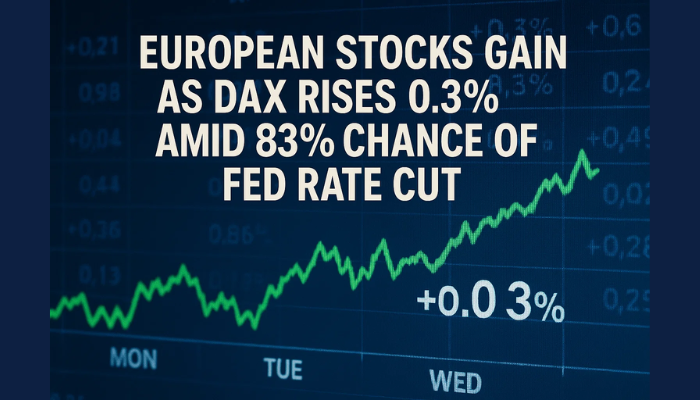European markets opened higher Monday as investors took advantage of last week’s sharp declines to “buy the dip.” Key benchmarks across the region regained some footing following Friday’s tariff-driven rout.
- Germany’s DAX rose 0.3%
- France’s CAC 40 climbed 0.5%
- U.K.’s FTSE 100 edged up 0.2%
The uptick comes after the Stoxx 600, the broad pan-European index, suffered its worst session since April last Friday. That drop followed the White House’s announcement of fresh tariffs on imports from multiple nations, rattling global equity sentiment.
Despite these headwinds, investors are positioning themselves for potential monetary policy support from the Federal Reserve, especially after a disappointing U.S. nonfarm payrolls report on Friday.
Fed Rate Cuts Now Largely Priced In
The weaker-than-expected U.S. jobs data has shifted expectations for Federal Reserve policy, fueling hopes for near-term rate relief.
Fed funds futures now imply:
- 83% chance of a September rate cut
- 60 basis points of total cuts expected by year-end, up from 33 bps before Friday
These shifting expectations have helped revive risk appetite, particularly in sectors that were hardest hit by tariff concerns and economic slowdown fears.
While Europe’s economic calendar was light Monday, U.S. factory orders due later in the day may offer insight into how corporate America is adapting to new trade headwinds.
In political developments, President Donald Trump announced plans to name a new head of the Bureau of Labor Statistics after firing Erike McEntarfer, alleging data manipulation without providing evidence.
Earnings Mixed; Oil Holds Steady
The second-quarter earnings season is slowing, but a few notable results shaped market sentiment Monday:
- PostNL posted a €24 million loss after government support was denied, triggering a €40 million impairment in its mail unit.
- Senior plc reported a 32% rise in pretax profit, driven by gains in its Aerospace and Flexonics divisions.
- UBS agreed to pay $300 million to settle legacy Credit Suisse mortgage-linked mis-selling claims in the U.S.
Meanwhile, crude oil prices remained stable despite a fresh output hike from OPEC+. The group agreed to raise production by 547,000 barrels per day in September, reversing a large portion of pandemic-era cuts. That increase represents about 2.4% of global demand.
At last check:
- Brent crude: down 0.2% to $69.80
- WTI crude: up 0.3% to $67.53
Investor sentiment remains cautiously optimistic as markets digest geopolitical developments, central bank positioning, and corporate earnings data.


